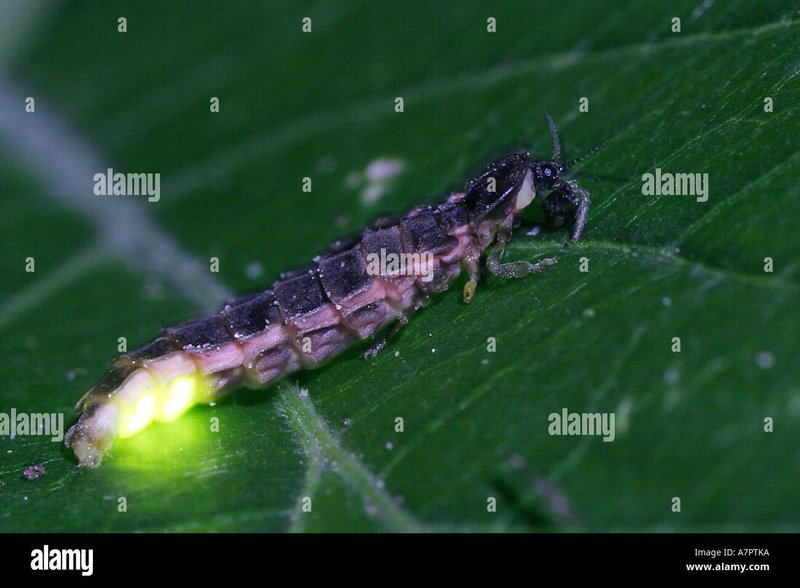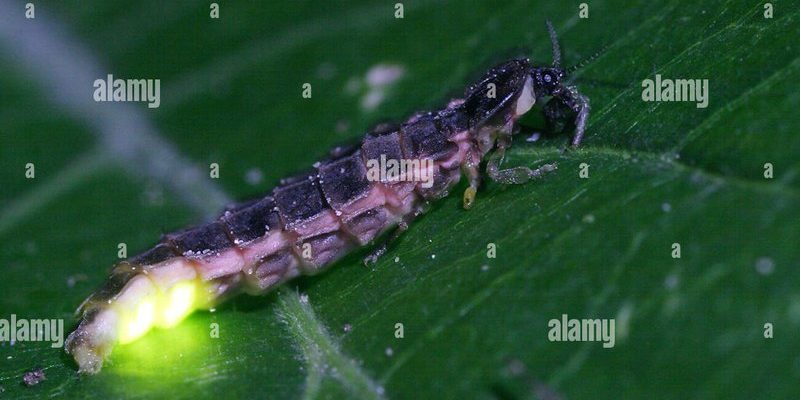
Glowworms come in various types, but let’s focus on some common ones that many people encounter, like the *Lampyridae* family—those lovely fireflies we see in summer. These creatures use bioluminescence to lure prey and communicate, but that’s just the tip of the iceberg. Their roles as decomposers in the soil or as part of the food web in aquatic ecosystems reveal their importance in maintaining ecological balance.
What Exactly Are Glowworms?
Let’s break it down. Glowworms aren’t a single species, but rather a term that refers to several different larvae or adult insects that emit light. You might think of them as nature’s little glow sticks. Specifically, the most famous glowworms are larvae of beetles and flies, primarily found in dark, damp settings.
– Bioluminescence: Glowworms produce light through a chemical reaction in their bodies. They emit this glow to attract mates or lure unsuspecting prey, often insects, which they catch in their silk threads. It’s a clever survival tactic!
– Life Cycle: They start as eggs, hatch into larvae, and eventually emerge as adults. The larval stage is where they shine, literally! These larvae can glow for up to several months to a year, feasting on whatever comes their way until they become adults.
Glowworms can primarily be found in damp areas like caves, forests, or even along riverbanks. Their unique adaptations help them thrive in specific environments that allow them to play their roles effectively.
The Role of Glowworms in Soil Ecosystems
Now, let’s talk about the nitty-gritty of how glowworms influence soil ecosystems. Think of them as tiny recyclers that help break down organic matter. Here’s how they fit into the grand scheme of things:
– Decomposition: Glowworm larvae feed on decaying matter, including dead leaves and other organic waste. This helps break down these materials, converting them into nutrients that enrich the soil. In essence, they help recycle nutrients, making them available for plants and other organisms.
– Soil Structure: As they consume organic matter, glowworms contribute to soil aeration. The tunnels they create in the soil can improve water drainage and root penetration, making it easier for plants to grow. Healthier soil means healthier flora, benefiting the entire ecosystem.
By supporting soil health, glowworms indirectly support larger animals and plants, creating a ripple effect that influences the entire ecosystem.
The Role of Glowworms in Aquatic Ecosystems
While many associate glowworms with land, some species thrive in aquatic environments as well. You might be wondering how these fascinating creatures adapt to life in the water.
– Food Source: In aquatic ecosystems, glowworms serve as a food source for various predators. They fall prey to fish and other aquatic organisms, making them an essential part of the food chain. Their presence indicates a healthy environment where biodiversity can flourish.
– Nutrient Cycling: Just like on land, glowworms contribute to nutrient cycling in water. They help break down organic materials that settle to the bottom, promoting a balanced ecosystem. This process contributes to overall water quality, supporting the life that thrives there.
So, whether it’s in a quiet forest or a flowing river, glowworms impact ecosystems in several significant ways.
Glowworms and Biodiversity
Biodiversity is crucial for maintaining ecosystem health. Glowworms play a surprisingly important role in this aspect too. They serve as indicators of environmental quality in their respective habitats.
– Environmental Indicators: Healthy populations of glowworms often signal a balanced ecosystem. Their presence suggests that the environment has enough organic material and is relatively free from pollutants. When populations decline, it can raise red flags about the health of that particular ecosystem.
– Ecosystem Interconnections: Glowworms are part of a larger web of life. They interact with various organisms, including plants, animals, and microorganisms. This web of relationships showcases the interconnectedness of different species and how harm to one can affect many others.
If glowworms are thriving, it usually means other species in the ecosystem are too, highlighting their importance in biodiversity.
Threats to Glowworm Populations
Unfortunately, glowworm populations face several threats that could impact their roles in both soil and aquatic ecosystems. Understanding these risks helps us appreciate why we need to protect them.
– Habitat Loss: Urbanization and changing land use often lead to the destruction of glowworm habitats. When forests are cleared or rivers are dammed, it disrupts the delicate balance of their ecosystems. Without a suitable home, glowworm populations can dwindle.
– Pollution: Pesticides and other pollutants can significantly harm glowworms. Their sensitivity to environmental changes means that when chemicals enter their habitats, it can lead to decreased populations. Reducing pollution is essential for their survival.
If we want to enjoy those magical glowing lights in the future, we must acknowledge these threats and act to minimize their impact.
Conservation Efforts and What You Can Do
So, how can we help protect glowworms and ensure their ecosystems thrive? It might sound cliché, but every small action counts.
– Support Local Conservation: Many organizations work to protect habitats and raise awareness about the importance of glowworms. Consider supporting these efforts through donations or volunteering your time.
– Practice Eco-friendly Habits: Reduce your use of pesticides and chemicals in your garden. Opt for natural alternatives that won’t harm glowworms or their habitats.
Remember, enjoying nature often means looking out for the little creatures that make it so special. By protecting glowworms, we also protect the broader ecosystems they inhabit.
In summary, glowworms may be tiny, but their roles in soil and aquatic ecosystems are anything but small. They help recycle nutrients, support biodiversity, and indicate environmental health, making them essential in maintaining the balance of nature.
So, next time you see those flickering lights, take a moment to appreciate their vital contributions to the ecosystem. After all, protecting these enchanting insects is not just about keeping their glow alive; it’s about ensuring the health of the world around us. Let’s work together to keep their light shining bright!

